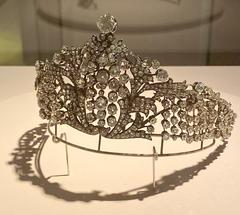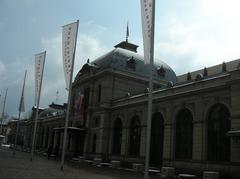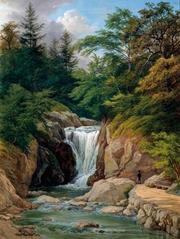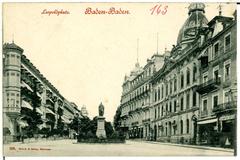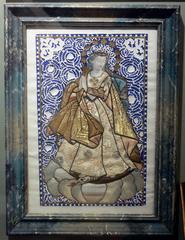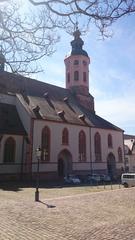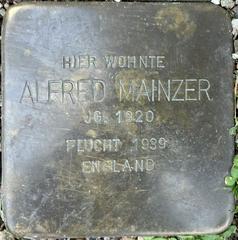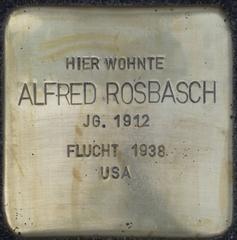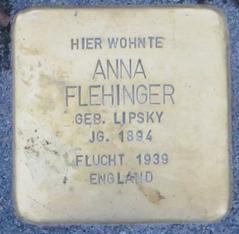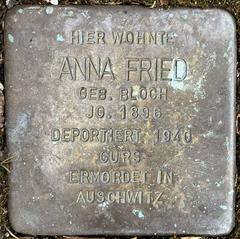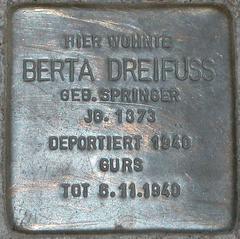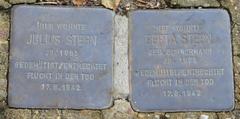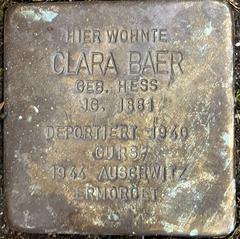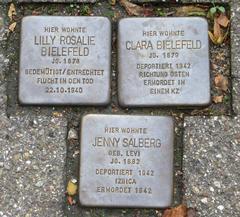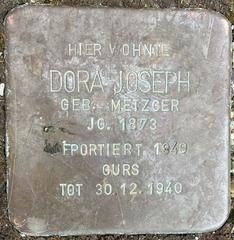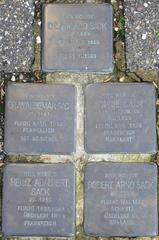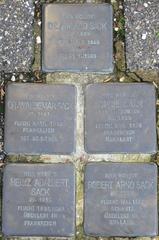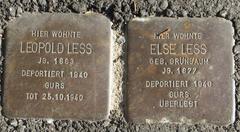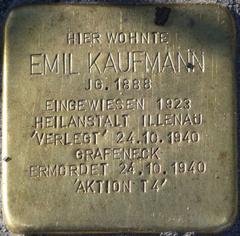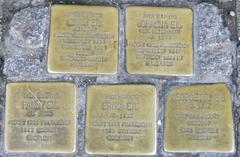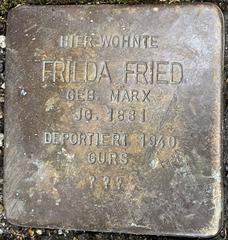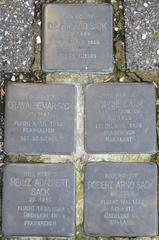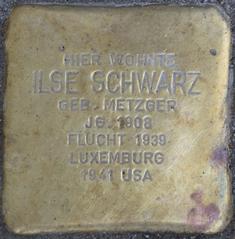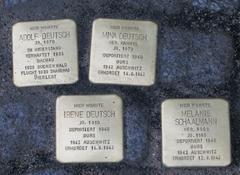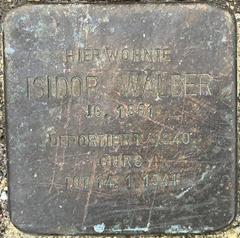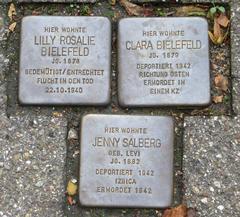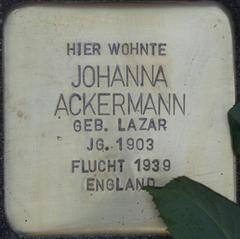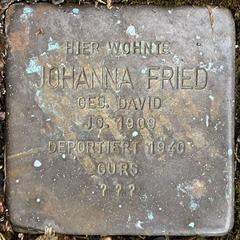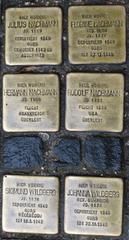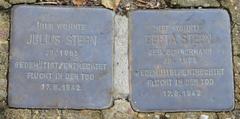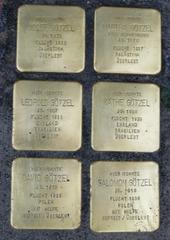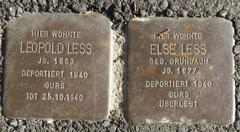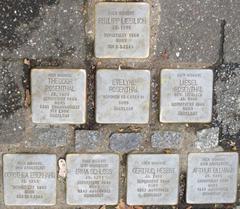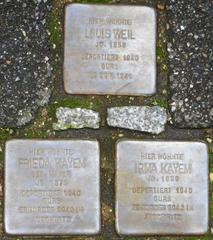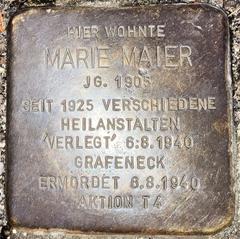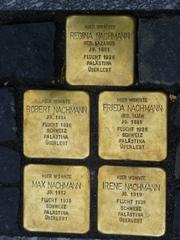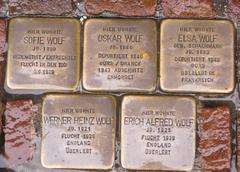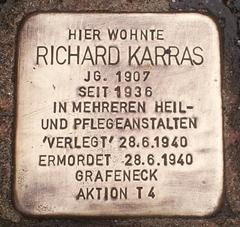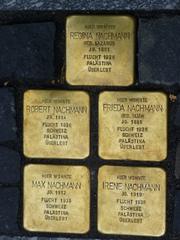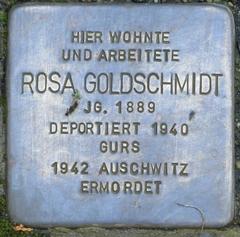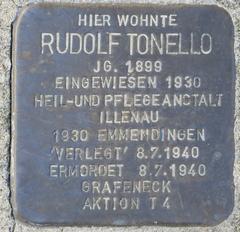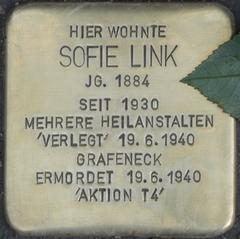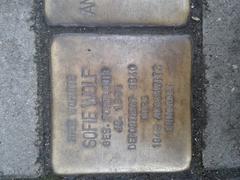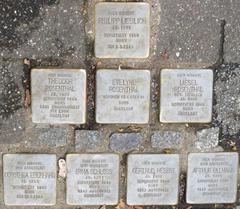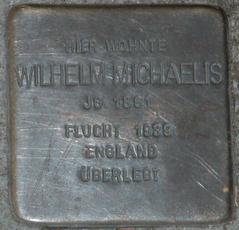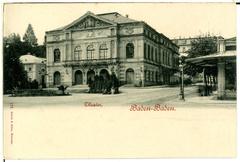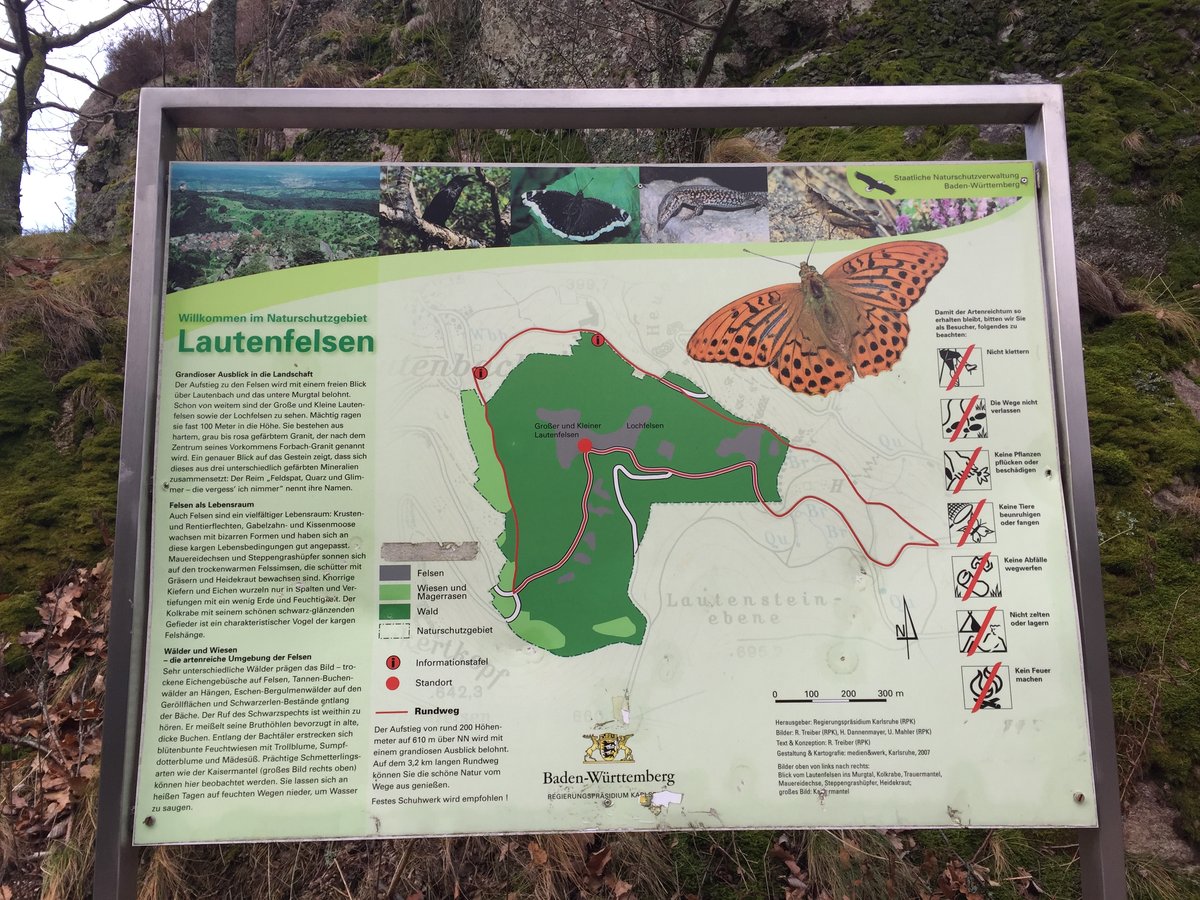
Comprehensive Guide to Visiting Lautenfelsen, Baden-Baden, Germany
Date: 01/08/2024
Introduction
Nestled within the scenic Northern Black Forest, Lautenfelsen in Baden-Baden, Germany, stands as a testament to the region’s rich historical and natural heritage. This guide aims to provide comprehensive insights into Lautenfelsen, covering its historical significance, visitor information, and practical tips to enhance your experience. Lautenfelsen offers a unique blend of geological marvels and cultural stories, with granite formations dating back 300 million years and legends hinting at mythical origins (Tourismus BW). The region’s history is deeply intertwined with the broader narrative of Baden, from ancient Celtic and Roman occupations to medieval margravates and eventual unification into modern Baden-Württemberg (Britannica). Today, Lautenfelsen is a protected natural reserve, providing a sanctuary for rare flora and fauna and offering breathtaking views over the Murg Valley and beyond (Wikipedia). Whether you’re a history enthusiast, a nature lover, or a casual traveler, this guide will equip you with all the necessary information for a memorable visit to Lautenfelsen.
Table of Contents
- [Historical Background](#historical-backgroundhistorical-background)
- [Ancient and Medieval History](#ancient-and-medieval-historyancient-and-medieval-history)
- [The Margravates of Baden](#the-margravates-of-badenthe-margravates-of-baden)
- [Unification and Modern History](#unification-and-modern-historyunification-and-modern-history)
- [The Formation of Baden-Württemberg](#the-formation-of-baden-württembergthe-formation-of-baden-württemberg)
- [Lautenfelsen’s Natural and Cultural Significance](#lautenfelsens-natural-and-cultural-significancelautenfelsens-natural-and-cultural-significance)
- [Visitor Experience and Conservation Efforts](#visitor-experience-and-conservation-effortsvisitor-experience-and-conservation-efforts)
- [Visitor Information](#visitor-informationvisitor-information)
- [Lautenfelsen Visiting Hours](#lautenfelsen-visiting-hourslautenfelsen-visiting-hours)
- [Lautenfelsen Tickets](#lautenfelsen-ticketslautenfelsen-tickets)
- [Travel Tips](#travel-tipstravel-tips)
- [Nearby Attractions](#nearby-attractionsnearby-attractions)
- [Accessibility](#accessibilityaccessibility)
- [Special Events and Guided Tours](#special-events-and-guided-toursspecial-events-and-guided-tours)
- [Photographic Spots](#photographic-spotsphotographic-spots)
- [FAQ Section](#faq-sectionfaq-section)
- [Visitor Information](#visitor-informationvisitor-information)
- [Visitor Tips and Activities](#visitor-tips-and-activitiesvisitor-tips-and-activities)
- [Hiking and Exploration](#hiking-and-explorationhiking-and-exploration)
- [Best Time to Visit](#best-time-to-visitbest-time-to-visit)
- [What to Bring](#what-to-bringwhat-to-bring)
- [Practical Information](#practical-informationpractical-information)
- [Getting There](#getting-theregetting-there)
- [Accommodation](#accommodationaccommodation)
- [Events and Festivals](#events-and-festivalsevents-and-festivals)
- [Summer Meeting in the Kurpark](#summer-meeting-in-the-kurparksummer-meeting-in-the-kurpark)
- [Baden-Baden Christmas Market](#baden-baden-christmas-marketbaden-baden-christmas-market)
- [Cultural Insights](#cultural-insightscultural-insights)
- [Local Legends and Myths](#local-legends-and-mythslocal-legends-and-myths)
- [Art and Music](#art-and-musicart-and-music)
- [Environmental and Cultural Significance](#environmental-and-cultural-significanceenvironmental-and-cultural-significance)
- [Geology](#geologygeology)
- [Cultural Heritage](#cultural-heritagecultural-heritage)
- [Additional Activities](#additional-activitiesadditional-activities)
- [Schloss Eberstein](#schloss-ebersteinschloss-eberstein)
- [Geroldsau Waterfall](#geroldsau-waterfallgeroldsau-waterfall)
- [Old Hohenbaden Castle](#old-hohenbaden-castleold-hohenbaden-castle)
- [Practical Tips](#practical-tipspractical-tips)
- [Frequently Asked Questions (FAQ)](#frequently-asked-questions-faqfrequently-asked-questions-faq)
- [Conclusion](#conclusionconclusion)
- [References](#referencesreferences)
Historical Background
Ancient and Medieval History
The region of Baden, where Lautenfelsen is located, has a rich history dating back to ancient times. Initially occupied by the Celts, it was later conquered by the Romans in the 1st century CE. The Romans established settlements and utilized the region’s natural resources, including its mineral-rich hot springs. However, by the 3rd century CE, the Romans yielded the area to the Alemanni, a Germanic tribe (Britannica).
During the Middle Ages, the territory now known as Baden was ruled by various counts, most notably the counts and dukes of Zähringen. In 1112, Hermann, the son of Hermann, Margrave of Verona, and grandson of Duke Berthold II of Carinthia, inherited some of the German estates of his family and called himself the Margrave of Baden. This marked the beginning of the separate history of Baden (Wikipedia).
The Margravates of Baden
In 1535, the territory of Baden was divided into the margravates of Baden-Baden in the south and Baden-Durlach in the north. Both margravates initially became Protestant during the Reformation, but Baden-Baden returned to Roman Catholicism in the 1570s. This religious division further weakened the region, making it vulnerable to external threats (Britannica).
The Thirty Years’ War (1618–1648) brought significant devastation to Baden. Towns such as Pforzheim, Durlach, and Baden were destroyed during the conflict. The region’s recovery was slow, but it eventually regained stability under the leadership of Louis William I, Margrave of Baden-Baden, who served from 1677 to 1707. Louis William was a distinguished commander in the imperial army and played a crucial role in wars against the Turks and the French. He also built the palace of Rastatt, which remains a significant historical site (Britannica).
Unification and Modern History
Baden was reunited under Charles Frederick, who was Margrave of Baden-Durlach from 1738 to 1811 and of Baden-Baden from 1771. Under his rule, Baden experienced a period of prosperity and happiness. However, the region faced challenges during the Napoleonic Wars. Charles Frederick had to cede territory west of the Rhine to Revolutionary France in the 1790s and was forced into an alliance with France in 1796. Despite these setbacks, Baden was compensated by France with new territories, extending its borders north to the Main River and south to Lake Constance (Britannica).
The Formation of Baden-Württemberg
The modern state of Baden-Württemberg, which includes the Lautenfelsen area, was formed in the aftermath of World War II. In May 1954, the Baden-Württemberg Landtag (legislature) adopted a new coat of arms featuring three black lions on a golden shield, framed by a deer and a griffin. This coat of arms once belonged to the Staufen family, emperors of the Holy Roman Empire and Dukes of Swabia. The golden deer represents Württemberg, while the griffin symbolizes Baden (Wikipedia).
Lautenfelsen’s Natural and Cultural Significance
Lautenfelsen, a nature reserve located in the town of Gernsbach in the Rastatt district of Baden-Württemberg, was designated as a protected area on November 27, 1991. The reserve covers approximately 48 hectares and is known for its unique geological formations, including the Große and Kleine Lautenfelsen made of Forbach granite. The area also features the Lochfelsen and extends into an open meadow valley and surrounding mountain forest (Wikipedia).
The Lautenfelsen reserve is part of the Northern Black Forest natural region and is entirely surrounded by the 7,630-hectare landscape protection area known as Mittleres Murgtal. It is also included in the 1,920-hectare FFH (Fauna-Flora-Habitat) area Unteres Murgtal and Seitentäler and the bird protection area Nordschwarzwald (Wikipedia).
Visitor Experience and Conservation Efforts
The Lautenfelsen area is a popular destination for hikers and nature enthusiasts. The Gernsbacher Runde hiking trail passes through the reserve, and a staircase carved into the rocks leads to a viewpoint at an elevation of 593.3 meters above sea level. From this vantage point, visitors can enjoy expansive views of the lower Murg Valley (Wikipedia).
The primary purpose of the Lautenfelsen nature reserve is to protect its unique habitats and species. Conservation efforts focus on maintaining the area’s natural beauty and ecological integrity. The reserve is managed under the IUCN Category IV designation, which emphasizes habitat and species management (Wikipedia).
Visitor Information
Lautenfelsen Visiting Hours
The Lautenfelsen nature reserve is open to visitors year-round. However, the best times to visit are during daylight hours to fully appreciate the scenic views and natural beauty.
Lautenfelsen Tickets
Entrance to the Lautenfelsen nature reserve is free of charge. There are no ticket requirements, making it an accessible destination for all visitors.
Travel Tips
Visitors are advised to wear comfortable hiking shoes and bring water and snacks, as there are no commercial facilities within the reserve. The nearest town, Gernsbach, offers various amenities, including restaurants, shops, and accommodations.
Nearby Attractions
In addition to Lautenfelsen, the town of Gernsbach and the surrounding Northern Black Forest region offer numerous attractions. Notable sites include the historic Old Town of Gernsbach, the Kaltenbronn Nature Reserve, and the scenic Murg Valley Railway.
Accessibility
The Lautenfelsen area is accessible by car and public transportation. Parking is available near the reserve, and regular bus services connect Gernsbach with nearby towns and cities.
Special Events and Guided Tours
Throughout the year, various guided tours and special events are organized in the Lautenfelsen reserve and the surrounding areas. These events provide visitors with deeper insights into the region’s natural and cultural heritage. Information on upcoming events can be obtained from the Gernsbach tourist information office or their official website.
Photographic Spots
Lautenfelsen offers numerous opportunities for photography enthusiasts. The viewpoints along the hiking trails provide stunning panoramas of the Murg Valley, especially during sunrise and sunset. The unique geological formations and diverse flora and fauna also make for excellent photographic subjects.
FAQ Section
What are the visiting hours for Lautenfelsen?
Lautenfelsen is open to visitors year-round, with the best times to visit during daylight hours.
Do I need to buy a ticket to visit Lautenfelsen?
No, entrance to the Lautenfelsen nature reserve is free of charge.
How do I get to Lautenfelsen?
Lautenfelsen is accessible by car and public transportation. Parking is available nearby, and regular bus services connect Gernsbach with surrounding areas.
Are there guided tours available?
Yes, guided tours are available throughout the year. Check with the Gernsbach tourist information office for details on upcoming tours and events.
What should I bring when visiting Lautenfelsen?
Visitors should wear comfortable hiking shoes and bring water and snacks, as there are no commercial facilities within the reserve.
Visitor Tips and Activities
Hiking and Exploration
Lautenfelsen is a hiker’s paradise. The trails leading to the granite formations are well-marked and cater to various skill levels. The most popular route is the Panoramaweg (Panorama Trail), which offers stunning views of the Black Forest and the surrounding landscapes. This trail is approximately 40 kilometers long and is divided into four stages, allowing visitors to choose sections that suit their fitness levels and time constraints (Germany Footsteps).
Best Time to Visit
The best time to visit Lautenfelsen is during the spring and autumn months when the weather is mild, and the natural scenery is at its most vibrant. Summer can also be a good time, but it tends to be more crowded. Winter visits are possible, but the trails can be slippery and challenging due to snow and ice.
What to Bring
Visitors are advised to wear sturdy hiking boots and bring plenty of water, especially during the warmer months. A camera is a must to capture the stunning vistas. Binoculars can also enhance the experience, allowing for better views of distant landscapes and wildlife.
Practical Information
Getting There
Lautenfelsen is accessible by car, with parking available near the trailheads. For those relying on public transportation, local buses connect Gernsbach-Lautenbach with Baden-Baden and other nearby towns. Detailed schedules and routes can be found on the Tourismus BW website.
Accommodation
While Gernsbach-Lautenbach offers several lodging options, visitors may also choose to stay in Baden-Baden, which provides a wider range of accommodations, from luxury hotels to budget-friendly B&Bs. Booking in advance is recommended, especially during peak tourist seasons.
Events and Festivals
Summer Meeting in the Kurpark
Every year at the end of August, the tranquil Kurpark in Baden-Baden comes alive with the Summer Meeting. This event transforms the spa garden into a vibrant party and gourmet mile, featuring tents, parasols, and tables set up for visitors to enjoy local delicacies and entertainment (Baden-Baden Events).
Baden-Baden Christmas Market
From late November to early January, the Baden-Baden Christmas Market offers a magical winter experience. Framed by the Black Forest mountains, the market features numerous stalls selling crafts, food, and holiday decorations, creating a festive atmosphere that attracts visitors from all over the region (Baden-Baden Events).
Cultural Insights
Local Legends and Myths
The legend of the Devil throwing the granite boulders adds a fascinating cultural dimension to Lautenfelsen. Such myths are an integral part of the local folklore, enriching the visitor experience with stories that have been passed down through generations.
Art and Music
Baden-Baden, located nearby, is a cultural hub with a rich tradition in art and music. The town hosts the Baden-Baden Festival, one of Europe’s top classical music festivals, attracting renowned artists from around the world. The Museum Frieder Burda, with its collection of modern and contemporary art, is another cultural highlight that visitors should not miss (Tourist Secrets).
Environmental and Cultural Significance
Geology
The granite formations at Lautenfelsen are approximately 300 million years old, formed through a process known as “woolsack weathering.” These formations were once part of the ancient seabed and were exposed due to the tectonic activity of the Upper Rhine Graben (Tourismus BW).
Cultural Heritage
The area around Lautenfelsen has been inhabited for centuries, and the natural landscape has played a significant role in local folklore and traditions. Informational plaques along the trails provide insights into the historical and cultural context of the region (Komoot).
Additional Activities
Schloss Eberstein
Located a short drive away, this castle offers historical tours and wine tasting sessions. The views from the castle are also spectacular.
Geroldsau Waterfall
A picturesque waterfall surrounded by rhododendrons, best visited between late April and early June. The site is accessible via a short hike and offers a serene setting for relaxation (Planetware).
Old Hohenbaden Castle
Also known as Altes Schloss Hohenbaden, this castle offers panoramic views of Baden-Baden and the Black Forest. The site is rich in history and provides a glimpse into the region’s medieval past (Germany Footsteps).
Practical Tips
To ensure a smooth and enjoyable visit to Lautenfelsen, keep the following practical tips in mind:
- Weather Check: Always check the weather forecast before your visit. Sudden changes in weather can affect visibility and trail conditions.
- Local Regulations: As Lautenfelsen is a protected area, adhere to all local regulations and guidelines to help preserve its natural beauty.
- Language: While many locals speak English, learning a few basic German phrases can enhance your experience and help in navigating local amenities.
Frequently Asked Questions (FAQ)
- What are the opening hours for Lautenfelsen? Lautenfelsen is open year-round. The best times to visit are from early morning to late afternoon.
- Do I need tickets to visit Lautenfelsen? No, entry to Lautenfelsen is free of charge.
- Is there parking available? Parking information is not readily available, so it is advisable to plan ahead and possibly park in nearby areas.
Conclusion
Lautenfelsen in Baden-Baden is more than just a picturesque destination; it is a site where history, nature, and culture converge. From its ancient geological formations and rich historical background to its protected natural reserves and vibrant local legends, Lautenfelsen offers a multifaceted experience for all visitors. The region’s accessibility, free entry, and variety of nearby attractions make it an ideal spot for a day trip or a longer exploration. Whether you’re hiking the well-marked trails, capturing stunning vistas with your camera, or delving into the region’s historical and cultural narratives, Lautenfelsen promises a rewarding and enriching experience. As you plan your visit, remember to respect the natural environment and take advantage of the local amenities and guided tours to fully appreciate this unique landmark. For the latest updates and more detailed information, consider downloading the Audiala mobile app or following relevant social media channels.
References
- Baden, historical state, Germany. (n.d.). In Britannica. Retrieved from Britannica
- History of Baden-Württemberg. (n.d.). In Wikipedia. Retrieved from [Wikipedia](https://en.wikipedia.org/wiki/History_of_Baden-W%C3%BCrttemberg

